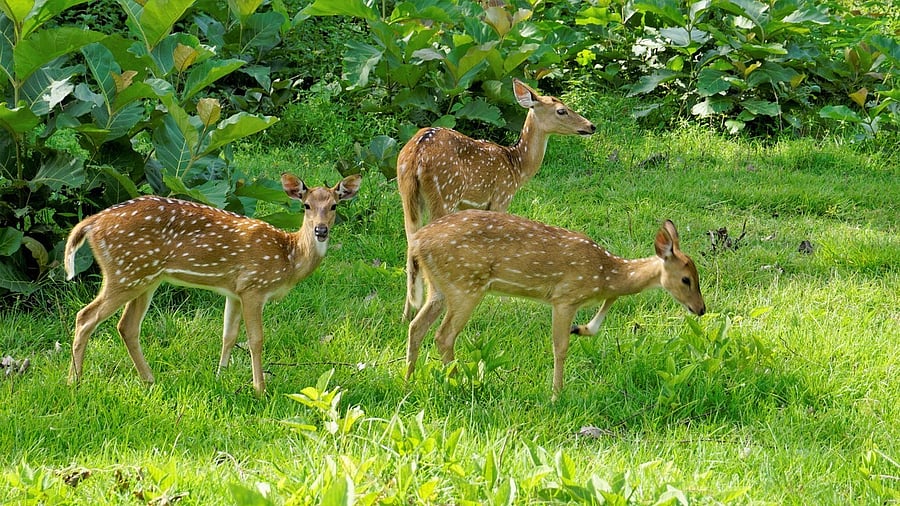
A herd of chital or spotted deer
Credit: iStock Photo
New Delhi: Where have the chitals of Kuno National Park gone though the cheetahs are kept mostly in enclosures?
Two years into the cheetah reintroduction programme, the Madhya Pradesh's national park has lost nearly 30-60 per cent of the chital (spotted deer) population when compared with the Cheetah Action Plan that guides the programme, according to official documents.
The chital population density at Kuno stands at 16.56 per sq km, as per 2023-24 annual report of the programme. The figure was 19.03 in last year’s report.
Both numbers are way short of the estimates given in the action plan that has two sets of figures on spotted deers, the main prey of cheetahs when the predators are released in the wild.
“Chital is the most abundant wild prey in Kuno NP with a population density of 38.48 individuals per sq km,” the action plan says, using camera trap data. A second set of data gathered from the line transect method survey and cited in the action plan shows a chital density of 23.43 per sq km.
When compared with the first figure, the current shortfall in chital numbers is around 57 per cent. Against the line survey data – a dependable method to estimate prey density - the decline is nearly 30 per cent.
“Leopard predation due to prey switching or shift from livestock to chital and other factors may have contributed to the decline. We are not sure and are looking into it,” Qamar Quereshi, a senior scientist at the Wildlife Institute of India, Dehradun, who is closely associated with the cheetah project told DH.
For months, officials and wildlife biologists knew about the declining prey base at Kuno.
The issue was discussed at the meetings of the Centre's Cheetah Project Steering Committee, which noted it as one of the major challenges facing the initiative since the reintroduction of cheetahs in India in September 2022.
As an interim solution, authorities have been introducing prey into both Kuno and Gandhi Sagar, where the next batch of cheetah would head to, sources said.
The scientists supervising the project advised against releasing all the cheetahs in the wild because of a low prey base.
Out of 20 cats brought from Namibia and South Africa, 12 are alive. But none of the 12 surviving cheetahs and 12 cubs born in India are free raging. No decision has been taken on when these animals will be released from their enclosures.
Even though cheetahs are known to coexist with leopards and lions in Africa, a section of officials is against the idea of releasing cheetahs amidst a big leopard population as that will reduce the “prey biomass for cheetah”. Kuno is estimated to have around 90 leopards.
